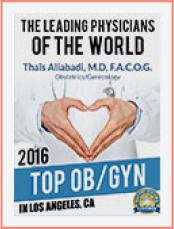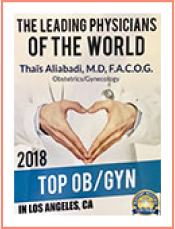What is adenomyosis?
Adenomyosis is a condition in which the endometrial tissue that lines the uterus grows into the muscular walls of the uterus. Endometrial tissue responds to your body’s hormones by thickening, breaking down, and bleeding with each menstrual cycle.
As a result, women with adenomyosis can have painful, heavy bleeding during their menstrual cycle.
Adenomyosis is generally found in women in their 40s and 50s but then resolves after menopause. Older women suffering from adenomyosis could be related to longer exposure to estrogen compared to younger women. However, recent research suggests that adenomyosis may be common in younger women as well.

What are the symptoms of adenomyosis?
Luckily, adenomyosis is not a life-threatening condition. Some cases of adenomyosis have no symptoms at all, while others can seriously impact your quality of life.
Adenomyosis symptoms may include:
- Heavy menstrual bleeding
- Long-lasting periods
- Severe cramping during menstruation (dysmenorrhea)
- Chronic pelvic pain
- Pain during sexual intercourse (dyspareunia)
- Bloating
- Enlarged uterus
- Difficulty becoming pregnant
What are the causes of adenomyosis?
The exact cause of adenomyosis remains unknown. Adenomyosis risk factors include:
- Prior uterine surgery, such as a C-section, fibroid removal, or dilation and curettage
- Childbirth
- Age (adenomyosis is more common in women aged 40 to 50)
Even though the cause of adenomyosis isn’t known, there have been many theories, including:
- Invasive tissue growth. Adenomyosis could result from the direct invasion of endometrial cells from the lining of the uterus into the muscle of the uterine walls. Uterine incisions made during an operation such as a cesarean section (C-section) might move endometrial cells into the wall of the uterus.
- Developmental origins. Adenomyosis may start within the uterine muscle from endometrial tissue deposited there when the uterus first formed in the fetus.
- Uterine inflammation related to childbirth. Inflammation of the lining of the uterus during the postpartum period might cause a break in the normal boundary of cells that line the uterus, allowing endometrial cells to invade the uterine wall.
- Stem cell origins. A recent theory proposes that bone marrow stem cells might invade the uterine muscle, causing adenomyosis.
Regardless of how adenomyosis develops, its growth depends on the circulating estrogen in women’s bodies.
How is adenomyosis diagnosed?
Adenomyosis is often misdiagnosed as uterine fibroids, a condition with similar symptoms but a very different course of treatment. Diagnosis of adenomyosis used to be quite difficult, but today, we have tests that can help detect the disease.
If you are experiencing some unusual menstrual symptoms, make an appointment with us. We can perform a pelvic exam and ultrasound to examine the uterine lining and the muscular walls more closely to diagnose adenomyosis. In some cases, we will inject saline solution into the uterus and perform an ultrasound — this is called a sonohysterography.
If the ultrasound reveals conditions consistent with adenomyosis, we can perform a three-dimensional transvaginal ultrasound (3D TVUS) or magnetic resonance imaging (MRI) to confirm the diagnosis.
Diagnosis could also involve a biopsy of endometrial tissue to rule out other gynecological conditions.
What are adenomyosis treatment options?
Dr. Aliabadi can help you decide the best course of treatment for you based on the severity of your symptoms and whether you’d like to become pregnant in the future.
Over-the-counter remedies
If your symptoms are mild, over-the-counter nonsteroidal anti-inflammatory drugs (NSAIDs) such as ibuprofen and heating pads can help you manage your discomfort.
Prescription pain relief
If over-the-counter medication isn’t helping, we may prescribe you stronger painkillers. You can usually take these for three to five days during the most painful period of your menstrual cycle.
Hormone therapies
Many women have had success controlling their painful and heavy periods with hormonal contraception or other hormonal therapies. Management options include an IUD (intrauterine device), GnRH agonists, birth control pills, or aromatase inhibitors.
Uterine artery embolization
This is a procedure in which tiny particles are inserted into the blood vessels to slow or stop blood flow to the uterus. This can shrink the adenomyosis and reduce your symptoms. It’s a minimally invasive procedure that can be performed on an outpatient basis. It’s not yet well-known how having a UAE will affect a woman’s chances of becoming pregnant or carrying a pregnancy to term.
Endometrial ablation
An endometrial ablation will destroy the uterine lining. It can treat adenomyosis if the endometrial tissue hasn’t grown too deeply into the muscular uterine wall. Ablation can significantly impact your future fertility and is only recommended if you no longer wish to become pregnant.
Hysterectomy
This is the complete surgical removal of the uterus. Usually, a hysterectomy is only performed if your symptoms are very severe and aren’t responding to other treatments. After a hysterectomy, you will no longer be able to become pregnant.
Adenomyosis vs. endometriosis: what’s the difference?
Adenomyosis and endometriosis are both conditions involving the abnormal growth of endometrial tissue, but they differ in their locations and manifestations.
Adenomyosis occurs when the endometrium grows into the muscular wall of the uterus (myometrium), leading to heavy, painful periods and an enlarged uterus.
Endometriosis, on the other hand, is characterized by the growth of endometrial tissue outside the uterus, such as on the ovaries, fallopian tubes, and other pelvic organs, causing pelvic pain and irregular bleeding. Both conditions can cause significant discomfort and may require medical treatment for symptom relief.
Because pelvic pain can be a symptom of multiple gynecological conditions, it’s important to schedule a consultation if you’re experiencing new or worsening pain.
Have questions about your health? Talk to Dr. Aliabadi
Dr. Aliabadi and her compassionate team are experts in women’s health care. When you’re treated by Dr. Aliabadi, you’re guaranteed to feel safe, heard, and well cared for. With over two decades of experience in obstetrics and gynecology, Dr. Aliabadi has had experience with women’s health, from routine care to pregnancy and even gynecological surgery.
We invite you to establish care with Dr. Aliabadi. Please make an appointment online or call us at (844) 863-6700.
The practice of Dr. Thais Aliabadi and the Outpatient Hysterectomy Center is conveniently located for patients throughout Southern California and the Los Angeles area. We are near Beverly Hills, West Hollywood, Santa Monica, West Los Angeles, Culver City, Hollywood, Venice, Marina del Rey, Malibu, Manhattan Beach, and Downtown Los Angeles.
Yes, it is possible to get pregnant with adenomyosis, but it may be more challenging. Adenomyosis can cause changes in the uterine environment that might affect implantation and pregnancy. However, many women with adenomyosis conceive and have successful pregnancies.
Adenomyosis itself is not cancerous and does not directly cause cancer. However, adenomyosis may sometimes coexist with other conditions that can increase the risk of certain types of cancers, such as endometrial cancer.
While there is no clear evidence that it is directly inherited, genetic factors may play a role in its development. Some studies suggest that a family history of adenomyosis or other uterine conditions, such as endometriosis or fibroids, may increase the risk.
Adenomyosis itself does not directly cause weight gain. However, the condition can lead to symptoms such as chronic pelvic pain, heavy menstrual bleeding, and bloating, which might contribute to a feeling of increased weight or abdominal fullness. Additionally, managing chronic pain and discomfort can sometimes lead to decreased physical activity, which might contribute to weight gain over time.
Adenomyosis is relatively common, particularly in women over the age of 30 who have had children. It is estimated that adenomyosis affects between 20-65% of women.
Sources
Laparoscopic management of juvenile cystic adenomyoma: four cases. Journal of minimally invasive gynecology. Kriplani, A., Mahey, R., Agarwal, N., Bhatla, N., Yadav, R., & Singh, M. K. (2011)
https://doi.org/10.1016/j.jmig.2011.02.001
















